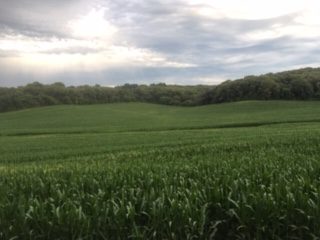On the steep hills of Harrison and Monona counties, Curt Mether has a cropping system that has stood the test of time. He has been no-tilling for more than 20 years and started planting cover crops on as many acres as possible six years ago. This year, the system allowed for timely planting.

“What I realized this spring is that everything that has been done to the ground – the tillage practices and conservation practices like cover crops – made a big difference,” he said. “I think farmers underestimate the cumulative impact of what they do over the course of time. No-till soils have better structure and improved infiltration and water-holding capacity. The soil supported the equipment and that made a world of difference this year.”
Mether began planting corn mid-April and wrapped up on May 2. Soybeans didn’t go in as quickly, but he finished planting on May 31. “Weather didn’t change my crop mix, which allowed me to stay with my regular corn/soybean rotation,” he explained.
He said corn emergence wasn’t ideal, but by mid-July the crops were uniform. “My corn began to tassel the second week of July,” he said. “Given the adverse weather we’ve had, I’m happy with our prospects.
“We learned this year that when you have a window to plant, take advantage of it,” he said. “We were able to plant an entire field of soybeans before it began to rain. We had to wait a couple of days to get into the next field, but we repeated that pattern until we were done planting.”
Mether has farmed long enough to realize every growing season provides an opportunity to learn something new. “The conservation practices we have in place on our farm helped us get the crop in this spring,” he said. “I’m grateful for a system that preserves the soil.”
Some of Mether’s terraces were repaired before he began planting because of heavy early spring rains and are holding up well. “Compared to 10 years ago, we are much better off for having an effective system in place. Even though the soils were cool when I started planting corn, the crop emerged.”
The western Iowa farmer is optimistic at this point in the growing season that there is potential for an above-trend-line corn crop. Soybeans are more variable because of the wider planting window, but he’s optimistic about them as well.
Click here to ask Curt a question about his farming operation.
